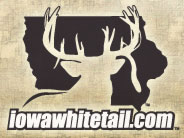Shoot2Kill
Active Member
I spotted a nice shooter buck a week ago on Monday coming out into a freshly picked corn field - while it was just barely light enough to see. He was there with 2 other bucks and 5 does...I hunted around that corn for the next 3 nights and only saw one doe and 2 fawns in those 3 nights. There were tracks all over that field while I was out there...then...the farmer chisel plowed the field and as of last night I found ONE set of tracks out there.
What is your experience with chisel plowed fields? There is only one field within 2 miles of where I'm hunting that is still just the stalks...everything else is plowed under. Those deer are obviously feeding elsewhere now. Have you guys experienced this? Thoughts? Ideas?
Why does it seem that every field is now chisel plowed in the fall? Are there advantages to this - question for the farmers on here. I think I'd see a lot more critters if all the fields weren't plowed under.
What is your experience with chisel plowed fields? There is only one field within 2 miles of where I'm hunting that is still just the stalks...everything else is plowed under. Those deer are obviously feeding elsewhere now. Have you guys experienced this? Thoughts? Ideas?
Why does it seem that every field is now chisel plowed in the fall? Are there advantages to this - question for the farmers on here. I think I'd see a lot more critters if all the fields weren't plowed under.






